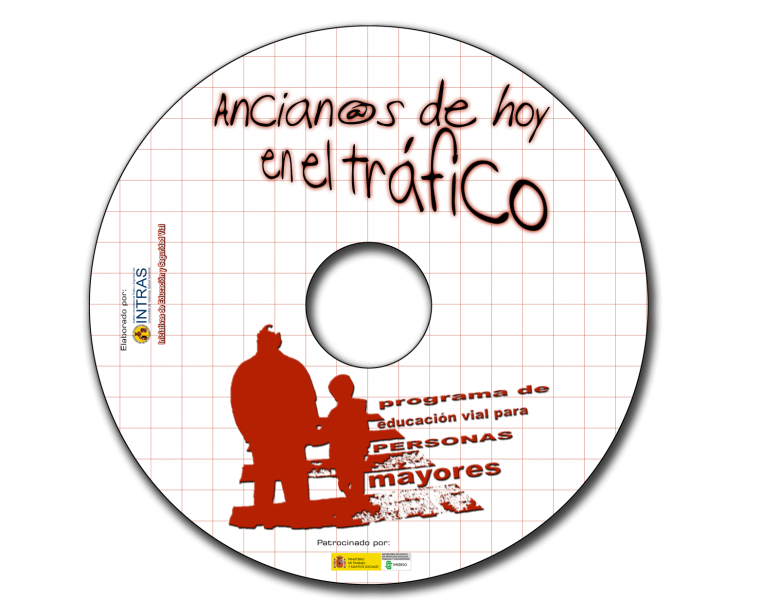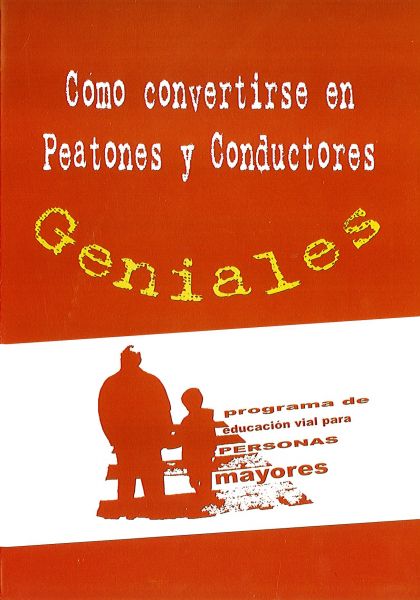Epidemiological studies estimate the population of older persons among the population groups with the highest growth in traffic accidents in recent years. Currently road safety education is regulated in schools. But the concept of road safety education is, and should be more extensive. Road Safety Education must be taught across all major life time. The elderly are just one of those groups in which the road safety Education is a "pending subject". Also if you look at the few interventions that take place in our country on road safety education for the elderly, these lack sufficient scientific basis, if not, a serious evaluation of its effectiveness.
Thus we find a lack of publications and educational resources that have the sufficient quality to be aimed at this group. In fact, most road safety programmes for seniors that have been launched in our country, have mainly focused on "the information, the call of care, awareness of the problem", but lack training in preventive strategies for acquiring positive and/or compensatory behaviours.
And the truth is that this situation does not correspond to the differential importance could and should take this issue into this group; we must not forget that the elderly with children are considered by the OECD as "vulnerable users of the traffic system" -. Differential importance not only from the fact of being a group larger than the rest of the users and growing as we shall risk - but that lessons conducted on road safety education while increasing the safety of those who receive is a positive element in the integration of older people.
It is necessary therefore to increase and extend the presence of the road safety education, but especially to improve programmes and educational experiences focused on this group. This involves the development of new programmes in this area to improve the effectiveness of this tool, to contribute to the creation of more responsible, safe and solidarity behaviours in the field of traffic that enable our seniors move safely in the environment traffic.
This programme has led to the development of the educational programme and support tools for implementation.
In this sense it has been designed a psychological Workshop, lasting 3 hours, where they have established content and teaching methods used in it. It has made the training of monitors using the appropriate course and mediating a publication where the contents of it are collected. On the other hand, regardless of the development of the visual application of exposure part the monitor has to make, it has been developed an audio-visual piece that is viewed in the first part of it and introduces some of the fundamental aspects that subsequently they will work in the course.
The programme would be split into two sub-programmes that would serve two roles aimed at two elderly complementary groups: Elderly as pedestrians and elderly as drivers of a vehicle. In addition to these two roles, he has served a third one referred to the elderly as users of public transport.
The base is always the same, dealing with the same risk factors, which also will be few and this feature correlates with efficiency. It should be not forgotten that different research tasks related to unsafe behaviours in the context of traffic have based their translation processes. So, it has been shown that people who drive without wearing their seat belts tend to skip over the lights, run, move in the opposite direction, or that people who cross the street by the inappropriate crosswalk areas ignore traffic lights, etc.
Therefore, the processing of factors such as the perception of risk is performed in a generic form only particularizing some behaviour that have greater representation from the point of view of violation rate and the accident rate. In short, we try to achieve the opposite effect to that which occurs naturally by the same process based on principles of learning in a controlled manner.
Nevertheless, it is necessary to make certain adaptations that have to do both with the group, their personality characteristics, etc., as variables as the social behaviour of the reference group. In this sense, the trainer will need to have the ability to detect or warn those points.
The contents of the Psychological Workshop are structured into five blocks with the following titles: Traffic accidents (Statistical data, the accident profile of the reference group, what is to be pedestrian/what is driving? macro causes, consequences ), errors and offences (Two facts as the base of accidents), Causes of traffic accidents (risk factors in the elderly population - perceptual deficits, motor deficits, morbidity, medicines) appropriate strategies to address the risks, Close and commitment.
For the central activity of the application of the course has a team of trainers, who provided with the necessary resources, apply the programme in previously approved centres.
Ceuta, Melilla, Madrid, Catalonia and Valencian Community 2004
Castilla la Mancha, Castilla- León and Extremadura 2006
For the assessment activity it has been developed a pre and post questionnaires (one of short-term application and another for long-term application) which are completed by those attending the courses.
Made for Education and Road Safety Initiatives by the DATS Research Group, in collaboration with some sections of the METRAS Research Group and the FACTHUM.lab Research Group.
Development and innovation
IMSERSO. Secretary of State for Social Services, Families and Disability. Ministry of Labour and Social Affairs. Government of Spain.














